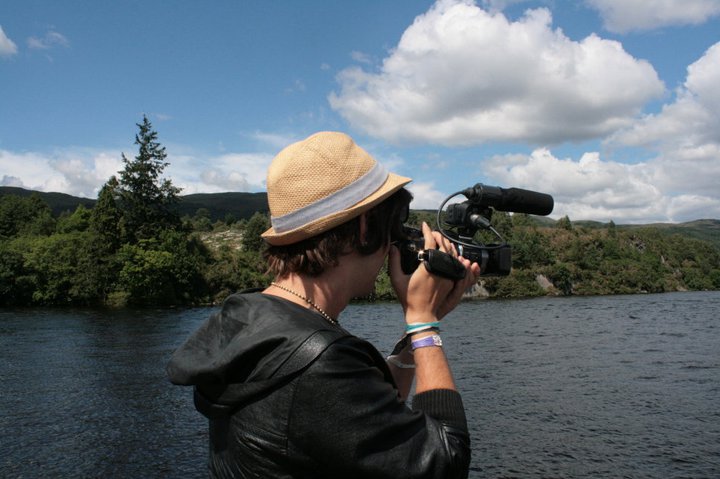🎬 How to Earn Money on Adobe Stock & Shutterstock
When I left Australia in 2024 to travel full-time, I knew I needed multiple income streams. YouTube ad revenue is great, but it fluctuates wildly depending on views and CPMs. That’s why I turned to stock footage as an additional, evergreen way to monetize the cinematic content I was already creating on the road.
This Video Shows My Real Earnings
I break down exactly how much each platform pays and which clips sell best in the video below.
This video is a video I made showing my earnings and which ones earn best.
Why I Started Selling Stock Footage
Platforms like Adobe Stock and Shutterstock allow creators to upload photos and videos that businesses, agencies, and editors can license. Every time someone downloads your clip, you get paid a royalty. It’s not instant riches, but over time it builds a library that keeps earning—even while you’re asleep or island hopping between shoots.
Stock footage became my favorite “set and forget” side hustle because it monetizes footage that would otherwise sit on a hard drive. The more you upload, the more digital shelves you fill, and the more chances you have for clips to sell month after month.
The Basics: How These Platforms Work
Adobe Stock
- Integrated directly with Adobe Premiere Pro, After Effects, and Photoshop—editors can license clips inside their timeline.
- Royalty rates improve as you sell more; quality 4K video can earn $20–80 per download.
- Curated library favors well-exposed, color-corrected footage with clear commercial uses.
Shutterstock
- One of the largest stock platforms in the world—massive buyer reach but higher competition.
- Contributor levels unlock higher royalties (15%–40%) as you hit download milestones.
- Partner distribution pushes your clips onto affiliated marketplaces for extra passive sales.
Both platforms pay royalties ranging from 15% to 40%, depending on exclusivity and your lifetime sales volume. Video payouts are typically higher than photos, making moving images the best use of your travel filmmaking skills.
Royalty Snapshot
Entry-Level Rate
15%
Starter royalty on both platforms for new contributors.
Experienced Creators
35%+
Reach higher tiers faster with consistent uploads.
4K Video Sale
$20–$80
Typical payout range per download depending on buyer plan.
What I Upload (And Why)
My content focus is travel: drone shots of skylines, cultural footage from markets and temples, and cinematic landscapes. I only upload clips that have a clear commercial use case so buyers can instantly imagine where they belong.
My High-Converting Categories
- Drone aerials of skylines, coastlines, and scenic flyovers.
- Cultural footage: bustling markets, temples, and city street life.
- Nature and landscapes: beaches, waterfalls, misty mountains.
Clips with Built-In Buyers
- Empty highways for automotive ads and narrative B-roll.
- People walking in markets for lifestyle edits and travel vlogs.
- Neutral corporate skylines with space for titles and motion graphics.
Pro Tip:
Upload footage with clear use-cases and searchable titles. Think like a buyer and describe what your clip actually solves.
Example: “Drone aerial of Hanoi Old Quarter at sunrise, Vietnam, 4K stock footage.”
How Much You Can Expect to Earn
Earnings vary depending on whether you focus on photos or videos, how many files you contribute, and the production value of your footage. Here’s how I break it down for new contributors:
Photos
- Sell more frequently but at lower payouts (cents to a few dollars).
- Requires a very large library to build meaningful passive income.
- Great for filling gaps between video shoots.
Videos
- Lower sales volume, but payouts can range from $10–$50+ per clip.
- A small catalog of strong, well-shot clips can outperform thousands of average photos.
- 4K and log-graded footage commands premium royalties.
My Real Numbers
I currently earn about $1,200 a year in extra passive income from my stock videos.
It may not sound massive, but that’s footage I uploaded once—and it keeps selling while I focus on filming the next adventure.
Workflow: How I Manage It
Because I’m already shooting for YouTube, I built a streamlined workflow that repurposes every clip:
- Film once, use everywhere: my footage lives in YouTube edits, stock uploads, and Instagram reels.
- Organize by location: folders named Bali, Hanoi, Cairns, etc., make batch uploads painless.
- Multi-platform uploads: Adobe Stock, Shutterstock, and Pond5 each add incremental revenue.
- SEO for stock: I mirror YouTube SEO—locations, subjects, shot types, and keyword-rich descriptions.
Tips to Succeed as a Beginner
- Stay consistent—don’t stop after uploading ten clips. The algorithm loves active contributors.
- Think like a buyer: “What problem does my clip solve?” rather than “Is it pretty?”
- Shoot clean and neutral so editors can add graphics or text without distractions.
- Stabilize your footage (or use tripods/drones) to avoid shaky clips getting rejected.
- Lean into niches: a unique Hanoi botanical garden shot sells faster than a generic sunset.
Final Thoughts
Selling on Adobe Stock and Shutterstock won’t replace a full-time income overnight. But for a travel filmmaker, it’s one of the smartest side hustles you can start. Your camera is already rolling—why not let those clips keep earning while you chase the next story?
Once your clips are uploaded, they can sell for years. That’s the definition of passive income: a growing archive working quietly in the background while you’re out filming somewhere new.
Keywords & Tag Words I Use
Why Stock Footage Works
- Royalty payments continue while you travel.
- Repurpose YouTube footage for licensing income.
- Strong keywords drive organic discovery.
- Batch uploads build a catalog fast.
- Compounding income as your library grows.
Ready to Start Uploading?
Grab my free checklist of titles, tags, and metadata prompts that help my clips rank on both platforms.
Request the Checklist